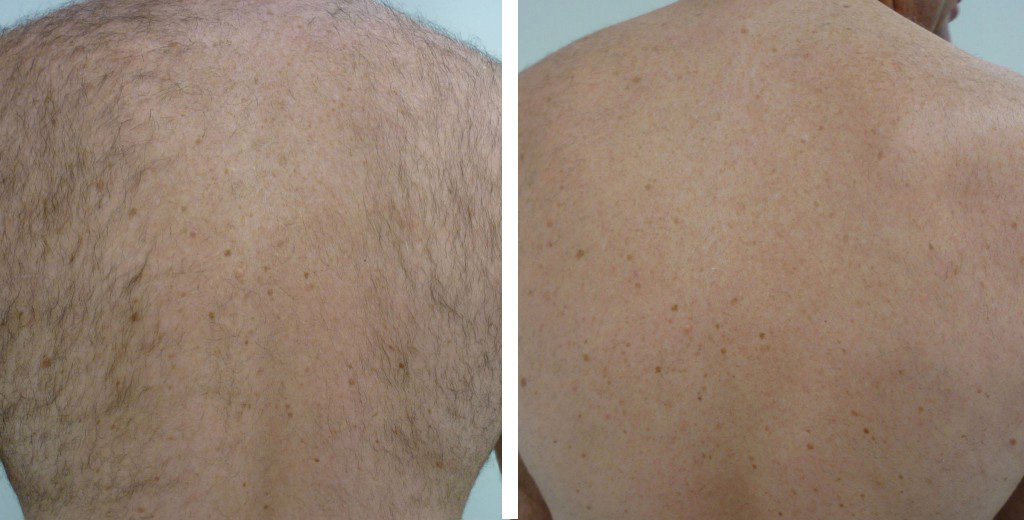Laser and IPL Hair Removal
 Lasers and IPL (Intense pulse light) both work by sending intense light energy into the hair follicles. Once the light is absorbed in the hair follicle (chromophore), the light converts to heat and destroys the hair follicle resulting in hair loss.
Lasers and IPL (Intense pulse light) both work by sending intense light energy into the hair follicles. Once the light is absorbed in the hair follicle (chromophore), the light converts to heat and destroys the hair follicle resulting in hair loss.
Laser
Laser machines produce a single wavelength of light (pure light consisting of one single colour and form), which has a very concentrated beam and specific target (the melanin in the hair follicle).
The type and colour of your hair and skin will determine the tuning settings of the machine and will be discussed with you during your test patch consultation. Laser machines are tuned to emit the exact wavelength required to treat your hair.
IPL
IPL’s are not lasers. The machines produce a broad spectrum of wavelengths just like a light bulb. They emit a range of different wavelengths at a variety of depths and this is what causes the destruction of the hair follicle.
Laser hair removal is most effective for people who have light skin and dark hair.
Is it a permanent treatment?
Laser and IPL, result in hair reduction. It is false to state it as permament hair removal. Hormones, medication, stress and other factors can stimulate dormant hair follicles at any time, and this can not be controlled.
Is laser and IPL safe?
Absolutely! With our trained staff and the knowledge that we have at Refresh ME about lasers, we enjoy educating our clients.
Laser and IPL work with infrared and visible light. These wavelengths do not penetrate deep enough to alter the molecular structure and no cell damage is caused.
How many sessions will I need?
Hair grows in several phases and a laser can only affect the currently active growing hair follicles. Hence, several sessions are needed to kill hair in all phases of growth.
Multiple treatments depending on the type of hair and skin colour have been shown to provide long-term reduction in hair.
Most people need a minimum of seven treatments.
The number of sessions depends on things like, area of the body being treated, skin colour, coarseness of hair, reason for excessive hair growth and sex. Coarse dark hair on fair skin is the easiest to treat.
Areas like, mens faces require many more treatments to achieve the desired effect.
It is generally recommended waiting three to eight weeks between sessions, again depending on the areas being treated.
When will I see results?
In the following weeks after your treatment, your shaved hairs that were in the growth phase, will move up the hair follicle and simply fall out. About 20%-30% of your hairs are destroyed with each treatment session. The remaining hair growth will be finer and less dense. This will be reduced with each subsequent treatment.
Does it hurt?
Most clients toleratethe procedure with minimal discomfort. However, the more the power is increased for maximum effectiveness, the stronger the “flicking” sensation is on the skin.
Effective cooling ensures that the maximum destructive power gets only to the hair follicle and blood vessels which need to be destroyed at the base of the hair shaft.
Better surface cooling means the least amount of pain and discomfort.
Will laser work for all people?
No unfortunately. Laser does not work well on light-colored hair, red hair, grey hair, white hair, as well as fine hair of any color, such as vellus.
As well as this, darker skin containing a lot more melanin, such as African American, Indian and some Asian skin, will absorb a lot of thermal heat energy. This is undesirable as it increases the risk of hyperpigmentation.
What do I need to do before my treatment?
- Stay out of the sun for 3-4 weeks.
- Use a 30+ sunscreen when you are exposed.
- Do not use fake tans or a solarium for 2-3 weeks prior to treatment.
- Do not wax, pluck or bleach for 1 month prior to treatment. The target is the hair root , and this is removed when you perform these procedures.
- Shave 24-48 hours prior to treatment.
What do I need to do after my treatment?
- Avoid direct sunlight for 2-3 weeks after treatment.
- Aways use a 30+ sunscreen.
- Redness in the area treated is very common. If this occurs, avoid:
- swimming
- hot bathes
- scented lotions
- exfoliants
- shaving
- activities that cause excessive sweating